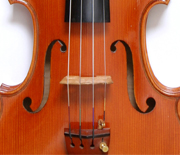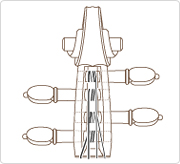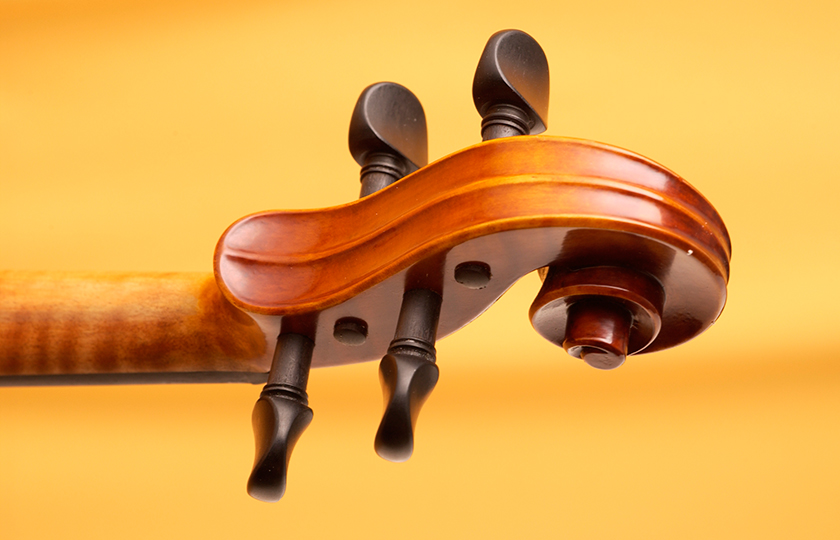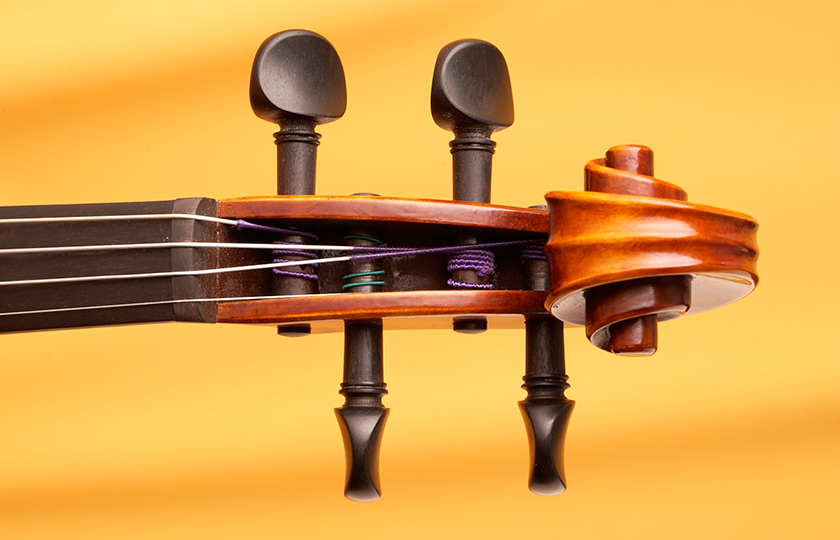The Structure of the Violin
The structure of the strings
The violin has four strings
From high to low, the strings on the violin are E, A, D, and G. They are made from a variety of materials including catgut (sheep intestine), nylon, and steel.

The tuning pegs are used for tuning
The neck is carved from a single piece of wood, and the part at the end that appears to wind in on itself is called the "scroll." The strings are attached to the tuning pegs, which are fitted inside narrowly carved holes, and held in place by friction.
Only the high E string has an adjuster so that it can be easily tuned, while the others rely on the tuning pegs for tuning, which might take some getting used to.
Recently, some violins come with four adjusters built into the tailpiece, so this is another option to consider.

The tuning pegs

The four strings are attached to the four tuning pegs

The neck is carved from a single piece of wood, excluding the tuning pegs
Musical Instrument Guide : Violin Contents
Origins
Structure
How to Play
How the Instrument is Made
Choosing an Instrument
Care and Maintenance
Trivia
- The f-hole used to be a C-hole or S-hole
- Why the f-hole?
- Violinists must bow to the horse
- Steel strings or gut strings? That is the question
- Is the chinrest the unsung hero of the violin?
- Most violin varnishes are also medicines
- Violin masterpieces: Solos I
- Violin masterpieces: Solos II
- Violin masterpieces: Solos III
- Violin masterpieces: Concertos I
- Violin masterpieces: Concertos II
- Viola masterpieces: Chamber music
- Viola masterpieces: Concertos
- Cello masterpieces: Concertos I
- Cello masterpieces: Concertos II
- Cello masterpieces: Solos
- Contrabass masterpieces: Concertos
- Contrabass masterpieces: Chamber music
- Orchestral masterpieces featuring the contrabass
- What do you call the part on the bow that you hold?
